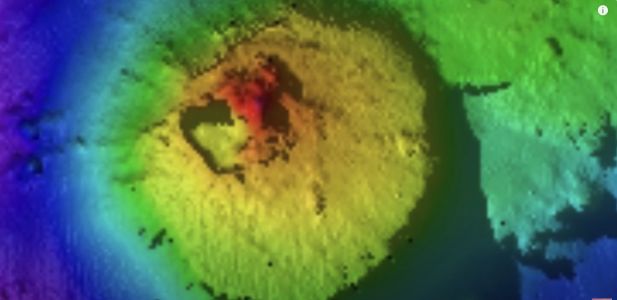 There is an old saying that we know more about the Moon than we do about the deep ocean. Critics say that the notion, first recorded in 1954, is out of date. While that may be the case, it is also clear that we still have much to learn about the deep ocean.
There is an old saying that we know more about the Moon than we do about the deep ocean. Critics say that the notion, first recorded in 1954, is out of date. While that may be the case, it is also clear that we still have much to learn about the deep ocean.
Recently, scientists on the Falkor (too) research vessel have discovered a mile-high mountain in the Pacific Ocean, off the coast of Guatemala. The 5,250-foot-tall (1,600 meters) formation is a seamount — a large, underwater geological feature typically formed from an extinct volcano. Scientists discovered the cone-shaped seamount 7,870 feet (2,400 m) below sea level during an expedition organized by the Schmidt Ocean Institute this summer, according to a statement shared with Live Science.
What difference does the discovery of a seamount make? Beyond the value of understanding oceanic bathymetry, uncharted seamounts can be hazards to navigation. In October of 2021, the Seawolf Class submarine, USS Connecticut, collided with an uncharted seamount in the South China Sea, doing considerable damage to the sub.
Also in April of this year, the 72′ Saildrone Surveyor discovered a 3,300-foot-tall seamount, about 200 miles off the coast of California.
How many more seamounts are yet to be discovered? Apparently, quite a few. In April, results of images from high-definition radar satellites revealed more than 19,000 undersea volcanoes around our planet, providing scientists with the most comprehensive catalog of seamounts ever created.
Vast Seamount Twice As High As Burj Khalifa Found Off Guatemala’s Coast
Thanks to Roberta Weisbrod for contributing to this post.

Thanks for keeping up the Old Salt Blog. There’s always something interesting to learn that I might otherwise miss.